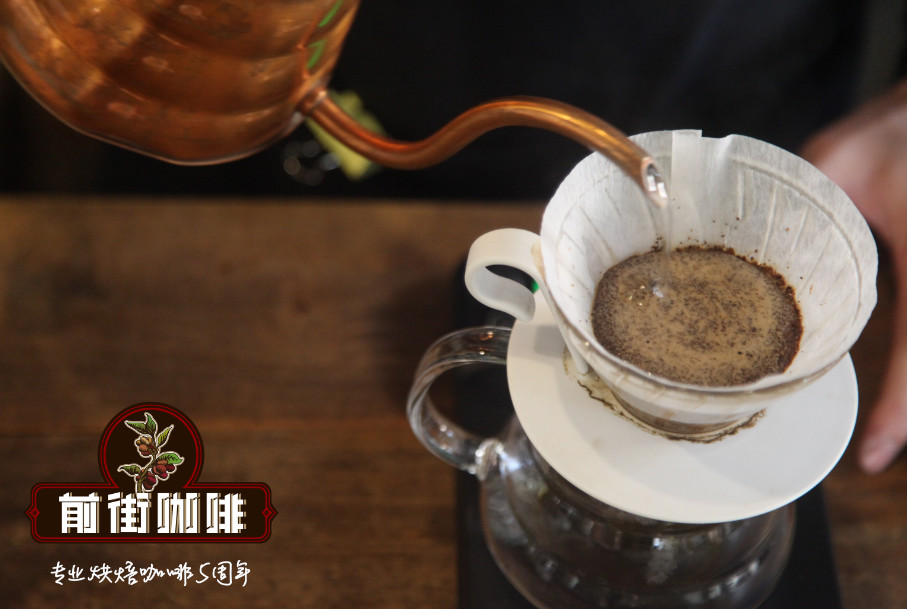What is the flavor of Paradise Manor Coffee in Nayarit Plateau, Mexico? Introduction of Coffee producing areas in Mexico

Professional coffee knowledge exchange more coffee bean information please follow the coffee workshop (Wechat official account cafe_style)
Coffee from the world's fourth largest coffee producer, slippery and fragrant, Mexico, the fourth largest coffee producer in the world, produces about 5 million bags of coffee a year. Most of its coffee is produced by nearly 100000 small farmers, and large estates that once manipulated the coffee industry are rare. The yield of Mexican coffee is about 630 kg per hectare. Later, the Mexican Coffee Association (Instituto Mexicano del Caf é, or Inmecafe) took control of the coffee industry. The Coffee Association controls both coffee cultivation and the market for coffee beans that can be exported since November. The association provides farmers with minimum purchase prices, technical advice and other assistance. However, since 1991, the Coffee Association's activities have been reduced and its functions are likely to be further weakened.
Mexico has 12 major coffee bean-producing areas, of which Nayarit is located in west-central Mexico near the Pacific Ocean. Coffee has been grown in Nayarit for more than 150 years, and a French immigrant family began to grow it in 1860. Coffee is grown here at an altitude of 1200-1500 meters. Most of the mountains are volcanic areas and the soil is volcanic ash. The high altitude and fertile volcanic soil give birth to the smooth taste and moderate acidity of coffee beans. Nayarit is one of the 12 main coffee-producing regions in Mexico.
Mexico is closely followed by Brazil and Colombia, which ranks third in Latin America in terms of output. Coffee production in Mexico increased significantly after World War II. In addition to oil, coffee is the second largest local export and has a great impact on Mexico's national economy. The coastal windward side of Nayarit is affected by the northeast monsoon. Because of abundant rainfall, fertile volcanic soil and abundant water resources, the sun-dried coffee fruits from Mi Cielito in Nayarit are refined by the sun, retaining the most primitive aroma and flavor of raw beans. Mexico is also one of the largest producers of organic certified coffee, most of which is sold to the United States for geographical reasons.
The country's coffee industry, which began in the 19th century, is mainly planted by Arabica varieties. More than 2 million of Mexicans depend on coffee for a living, and 75% of Mexican coffee farmers grow coffee on less than two hectares of land. these small farmers produce about 30 per cent of the country's coffee each year, with the rest produced by large or high-capacity farms.
The Paradise Manor in Nayarit Plateau, Mexico, is insolated.
MX Nayarit Mi Cielito Nat.
This group of 10 coffee farmers began to work together in 2008, focusing on using sustainable methods to grow coffee to protect the environment and the quality of life of coffee farmers themselves, and even the communities in which they live. They work together to cultivate about 40 square kilometers of land, located in the Veracruz area, and they work hard to grow coffee in the hope that each variety they grow will show the most unique and attractive characteristics. In order to achieve their goal, they adopt solid farming practices in the planting stage, picking only the most mature coffee cherries when harvesting, and using very strict criteria for raw bean processing.
Origin: Mexico
Farm: Nayarit Mi Cielito. Cooperative society
Coffee varieties: iron pickup, bourbon, Kaddura, New World species
Altitude: 980 Murray 1140 m
Raw bean treatment: sun drying
Flavor description: air-dried orange, nut, corn and toast are well balanced.
Shallow baking City (fragrance): the aroma of the fruit is full and a little wild, the acid is not obvious until a few seconds after drinking, the fat taste is thin, and the aftertaste slowly appears behind the tongue. It has the aroma and taste of Pengfeng tea.
Medium baking (general B): the aroma of fermented fruit, acid is a weak acid, smooth and round taste, with ripe tea flavor.
Re-baking (general C): the aroma of red vegetables, no acidity, clean taste, no extra impurities, sweet with fairy grass and wheat.
Important Notice :
前街咖啡 FrontStreet Coffee has moved to new addredd:
FrontStreet Coffee Address: 315,Donghua East Road,GuangZhou
Tel:020 38364473
- Prev

What is the most famous coffee in Mexico? What are the flavor characteristics of Mexican coffee?
Professional coffee knowledge exchange more information about coffee beans Please follow the coffee workshop (Wechat official account cafe_style). It is said that the coffee tree was transplanted to Mexico from the West Indies by a Spaniard in the late 18th century. The excellent Mexican coffee has a comfortable taste, mellow taste, moderate acidity, mild and meticulous, and pleasant aroma. Mexico is located at the northern tip of Central America.
- Next

What is the aging treatment of aged coffee beans? the characteristics of Sumatran aged Mantenin coffee beans
For information, please pay attention to the coffee workshop (Wechat official account cafe_style) Old bean treatment method for aged coffee beans does not mean that after the raw coffee beans have been kept for a long time, this is not allowed, because the raw coffee beans will rot after they have been kept for a long time, and will change from fresh cyan to white, then to yellow, become dull, and even grow worms. Like old wine, raw beans must go through
Related
- Detailed explanation of Jadeite planting Land in Panamanian Jadeite Manor introduction to the grading system of Jadeite competitive bidding, Red bid, Green bid and Rose Summer
- Story of Coffee planting in Brenka region of Costa Rica Stonehenge Manor anaerobic heavy honey treatment of flavor mouth
- What's on the barrel of Blue Mountain Coffee beans?
- Can American coffee also pull flowers? How to use hot American style to pull out a good-looking pattern?
- Can you make a cold extract with coffee beans? What is the right proportion for cold-extracted coffee formula?
- Indonesian PWN Gold Mandrine Coffee Origin Features Flavor How to Chong? Mandolin coffee is American.
- A brief introduction to the flavor characteristics of Brazilian yellow bourbon coffee beans
- What is the effect of different water quality on the flavor of cold-extracted coffee? What kind of water is best for brewing coffee?
- Why do you think of Rose Summer whenever you mention Panamanian coffee?
- Introduction to the characteristics of authentic blue mountain coffee bean producing areas? What is the CIB Coffee Authority in Jamaica?

